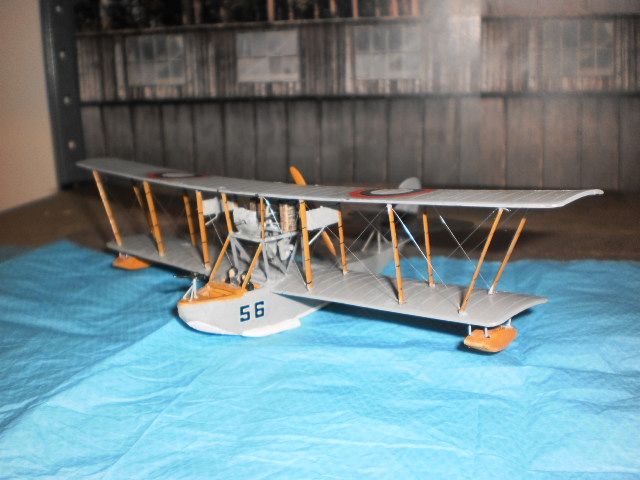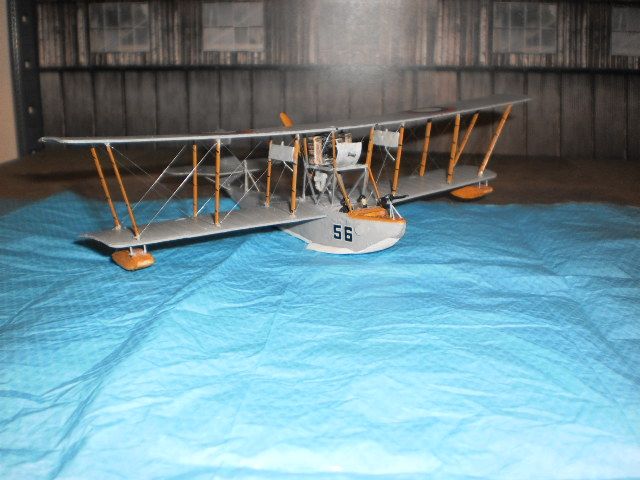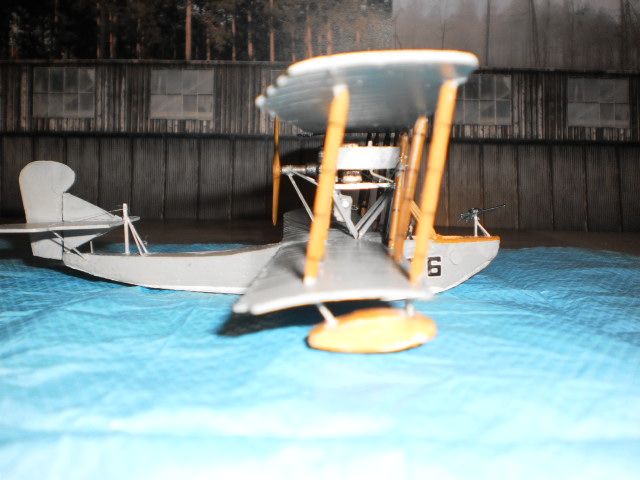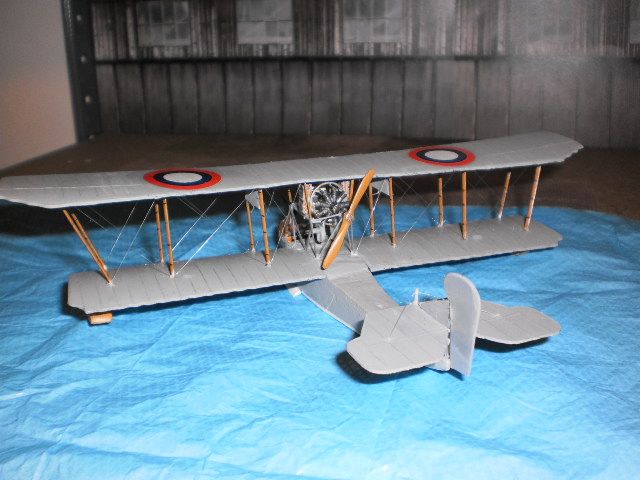Hi All,
Hope this is of interest as light relief. It was inspired by Bud and Des who began resin builds of Grigorovich flying boats last year. I suppose the methodology is a bit retro but it has proved quite useful. This is my second build using balsa wood as the main material for the fuselage. I’m a recent convert and as yet am still feeling my way but I have been pleasantly surprised at how manageable this wood as proved to be. Basswood has been suggested as a viable alternative. Been finished since Christmas but since have been in an alternative universe. Here is the build thread
http://airfixtributeforum.myfastforum.org/viewtopic.php?f=79&t=49935and most of the history quoted has been gleaned from Wiki and an article by Colin Owers here.
http://www.ww1aero.org.au/pdfs/Sample%20Journal%20Articles/Grigorovich1996.pdfThe Grigorovich M9 was a development of the earlier M5. This aircraft was powered by various types of rotary engine but the M9 utilised the more powerful Salmson water cooled radial, most of which produced 150hp. Although designed by Dmitri Pavlovich Grogorovich he was employed by the Schetinin aircraft company and the designs were often referred to as the Schetinin M5 or M9. The protype was tested at Baku, on the warmer Caspian Sea, during Dec 15 – Jan 16. It had a separate cockpit in the nose where the machine gun was installed. It could carry a crew of three but the norm was two, both occupying the main cockpit until duty called. A radio was installed and bombs could be carried under the wings. Top speed was around 70mph with a ceiling of 3000m. The M9 entered service in mid 1916 and served in the Baltic and Black Sea areas.
Generally the M9 could hold it’s own against enemy naval two seaters but struggled against naval single seat fighters such as the Albatros W4. Being a pusher the M9 was defenceless against attacks from the rear and attempts to mount mgs that could fire to the rear were largely unsuccessful. Particularly in the Baltic the M9 increasingly needed a fighter escort in areas contested by the Germans. Nevertheless the M9 could strike back and the most successful M9 combatant was Commander M. Safonov who claimed 11 victories, most of which while flying the M9.
The Russian revolution saw both sides make use of the M9. The Whites used a small number on the North Russian front but most appear to have seen service with the Reds. In the Baltic, M9’s were escorted by Nieuport fighters and attacked British ships and aircraft based at Biorko, in Finland. Pardoxically the Finns acquired nine M9’s too and they were used until 1922. In the south, M9’s operated in defence of Baku, dropping in the region of 6,000 kgs of bombs/projectiles and carried out reconnaissance, artillery spotting and air combat duties. After the civil war ended the M9 remained in production with later machines using 240hp engines. It was phased out in 1924.




Regards, Steve